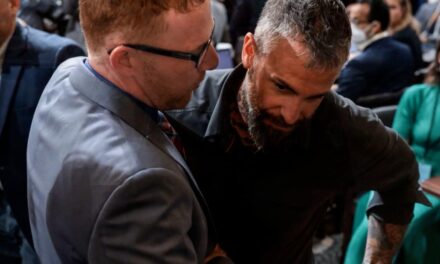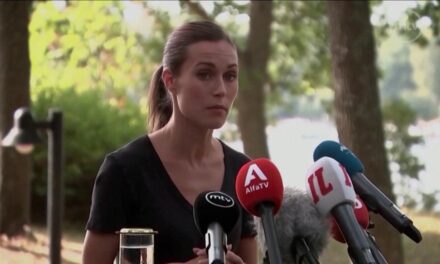
Nord Stream operator warns of ‘unprecedented damage’ to its pipelines

White House “not going to speculate” on cause of pipeline leaks and stands ready to support European partners
From CNN’s Natasha Bertrand
A National Security Council spokesperson says that the White House “is not going to speculate on the cause” of major damage to the Nord Stream 1 and 2 gas pipelines that has led to leaks in the Baltic Sea.
The spokesperson told CNN that the United States’ European partners are investigating and that “we stand ready to provide support to their efforts.”
“As you know, these pipelines weren’t pumping gas into Europe at this time,” the official added. “NS2 was never operational. Nord Stream 1 has not been operational for weeks because of Russia’s weaponization of energy. This just drives home the importance of our efforts to work together to get alternative gas supplies to Europe and to support efforts to reduce gas consumption and accelerate true energy independence by moving to a clean energy economy.”
Some more context: In September, Russia halted deliveries of gas to Europe through Nord Stream 1 indefinitely, saying it was due to an oil leak at one of its compressor stations.
As CNN has previously reported, US officials have expressed concern that Russia’s weaponization of oil and gas, leading to skyrocketing costs and even potential blackouts across Europe this winter, could successfully force fissures in what up until now has been a largely united European front opposing Russia’s war in Ukraine.
Swedish seismologists detected explosions in the area close to Nord Stream pipelines
From CNN’s Livvy Doherty, Sharon Braithwaite, Robert North and Chris Liakos
The Swedish National Seismic Network (SNSN) said Tuesday that it detected two explosions on Monday near the area of the Nord Stream pipelines.
The first explosion was recorded at 2:03 a.m. local time in the early hours of Monday and the second one 17 hours later, at 7:04 p.m. on Monday evening, according to SNSN.
SNSN said that one of the underwater explosions resulted in a tremor of 2.3 magnitude.
According to SNSN, the last time a similar seismological event was registered in the area was in 2016. It added that this area is not usually used for defense exercises.
The German geological research centre, GFZ, told CNN that two tremors were registered at similar times at a seismic station on the Danish island of Bornholm, again close to the reported leaks on the pipelines.
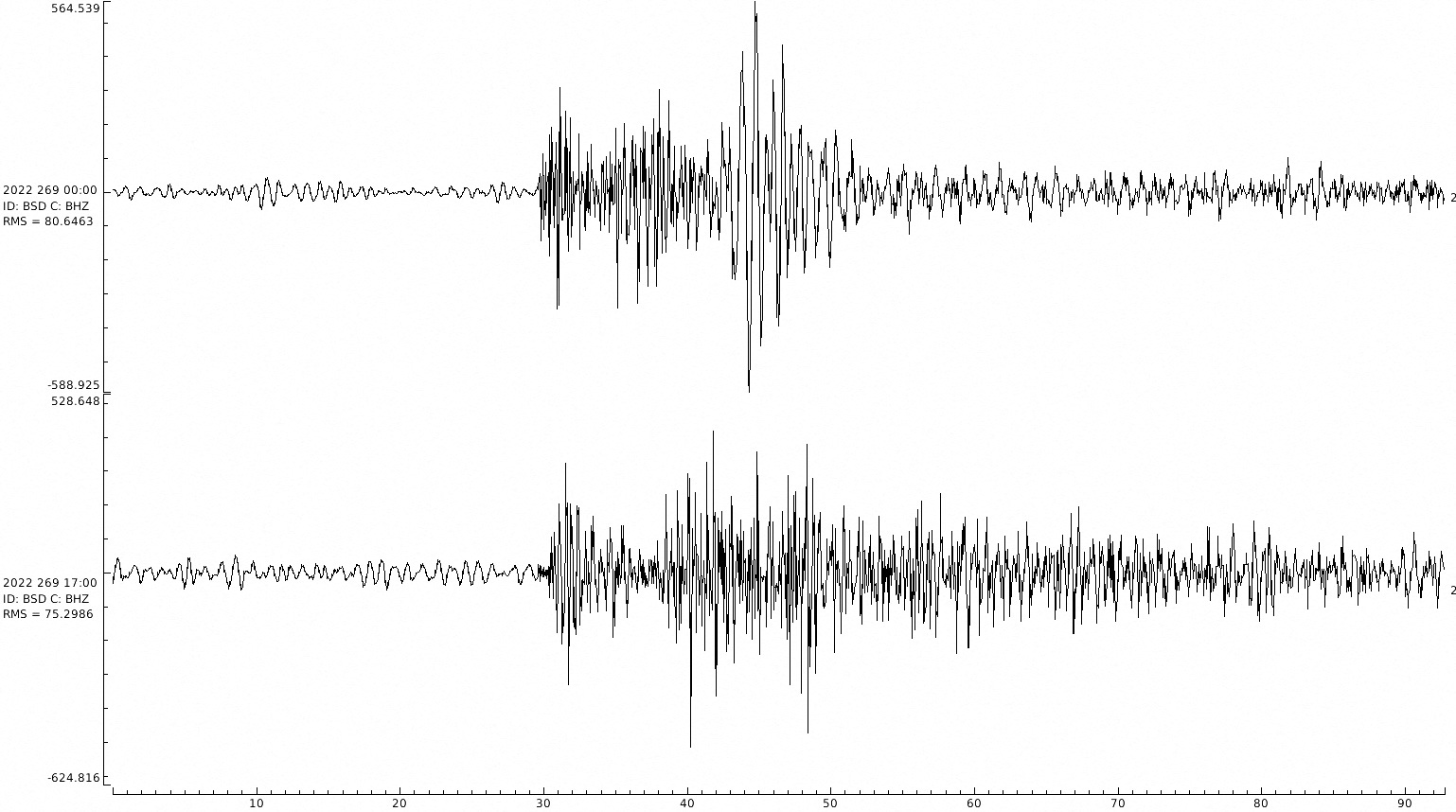
Josef Zens, spokesperson for GFZ, told CNN that the first tremor was recorded at 2:03 a.m. local time and a second was recorded 17 hours later.
Zens said that “it could not be said if there was any connection between the tremors and the leaks registered on the Nord Stream pipelines on Tuesday.”
The Swedish National Seismic Network said that warnings about the gas leaks came from the maritime administration at 1:52 p.m. and 8:41 p.m. on Monday, respectively, after ships detected bubbles on the surface.
Earlier on Tuesday, the Swedish Maritime Authority told CNN that three leaks have been identified in pipelines for Nord Stream 1 and Nord Stream 2 near Bornholm, warning vessels to maintain a distance of 5 miles (8 kilometers) from the leaks and issuing a warning for aircraft, with a safety altitude of 1,000 meters.
The Danish Defense Command said in a statement Tuesday that “following the three gas leaks on the Nord Stream gas pipelines in the Baltic Sea, prohibition zones have been established around the leaks for the sake of the safety of ship and air traffic.”
Nord Stream AG, the operator of the pipelines, in safety documents published before any news emerged of three separate pipeline leaks in one day, had said that the probability of a pipeline failure or leakage is “as low as one damage event every 100,000 years”.
The operator also said that pipeline repairs were “not expected to be necessary during Nord Stream’s minimum operational lifespan of 50 years.”
Nord Stream 1 became operational in 2012, and Nord Stream 2 was completed in 2021, but never became operational.
Speaker of Russia’s upper house says the admission of new regions may be considered on Oct. 4
From CNN’s Uliana Pavlova

Russia’s Federation Council — the upper house of the parliament — may consider requests from new regions to join Russia on Oct. 4, according to the Council’s Speaker, Valentina Matvienko.
Referring to the so-called referenda being staged in four occupied regions of Ukraine, Matvienko said: “We respect the will of the residents of the DPR [Donetsk], LPR [Luhansk], Zaporizhzhia and Kherson, and if such is the will on their part, we will certainly support [their] joining Russia.”
She said there was no need for an extraordinary meeting of the council before then.
“The scheduled meeting of the Federation Council on October 4. I believe that on the 4th, if everything is confirmed, we will be ready to consider (laws on the entry of new regions into the Russian Federation),” Matvienko said.
Leader of self-declared Luhansk republic plans an immediate trip to Moscow to seek admission to Russia
From CNN’s Tim Lister
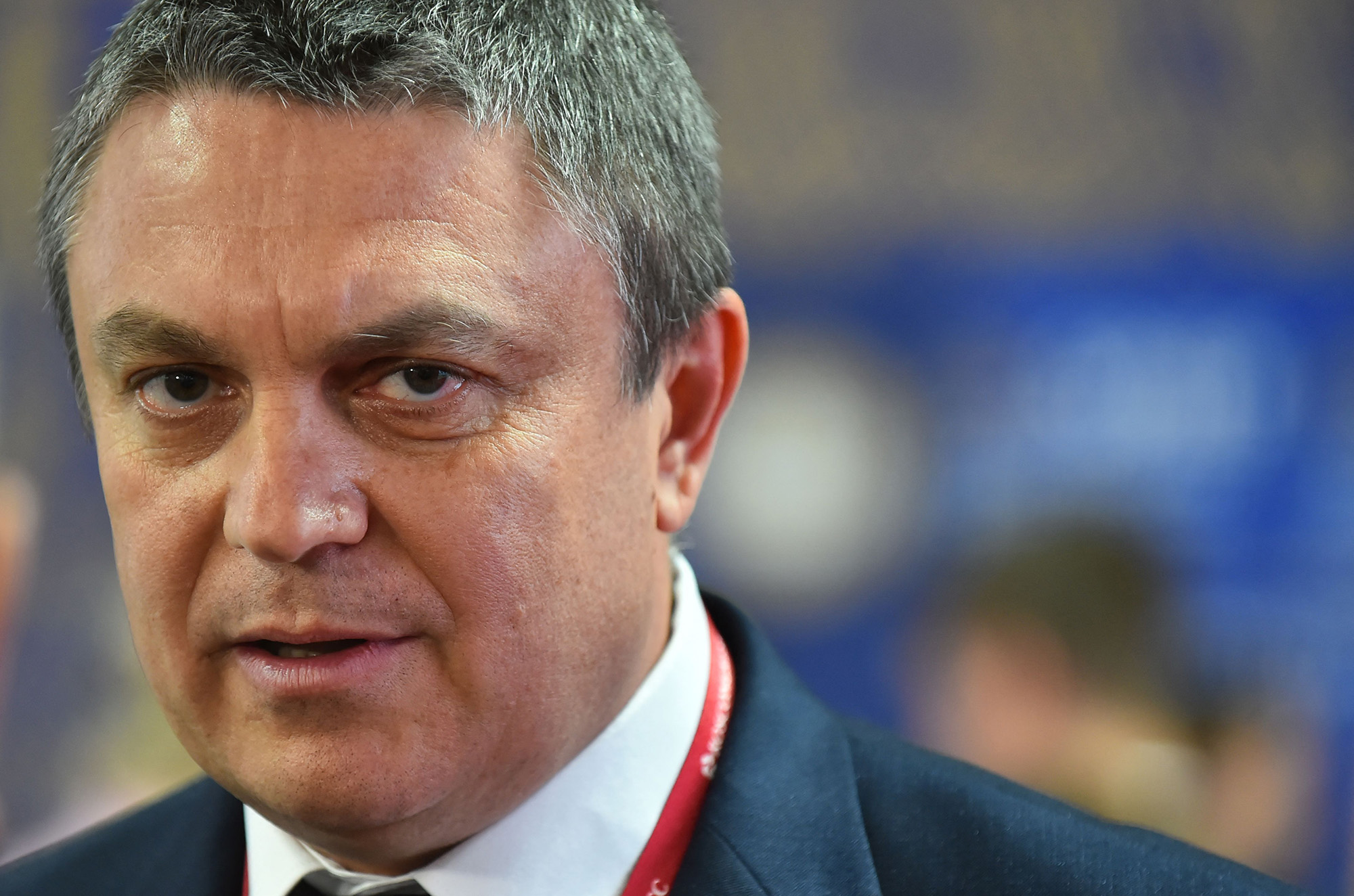
The leader of the self-declared Luhansk People’s Republic, Leonid Pasechnik, says he hopes to travel to Moscow today or Wednesday to request that Russian President Vladimir Putin accepts the region into the Russian Federation.
According to remarks carried by the Luhansk Media Center, Pasechnik said he had prepared an appeal to the President of the Russian Federation “to consider in accordance with the procedure established by law the issue of the entry of the Luhansk People’s Republic into Russia.”
Pasechnik was quoted as saying: “I very much hope that in the near future, today or tomorrow, I will go to Moscow. I have prepared a corresponding appeal to the President of the Russian Federation Vladimir Vladimirovich Putin with a request to consider the issue in accordance with the procedure established by the legislation of the Russian Federation on the entry of the Luhansk People’s Republic into Russia as a subject of the Russian Federation.”
More context: Early results in the widely discredited referendum process in Luhansk and three other regions occupied by Russian forces show huge majorities in favor of joining Russian, according to Russian state media.
The referenda have been dismissed as a sham and against international law in Kyiv and by western governments.
Russian media claims partial results of “referenda” in Ukraine show huge majorities in favor of joining Russia
From CNN’s Tim Lister and Uliana Pavlova

Russian state news agency RIA Novosti said first partial results from the four parts of Ukraine where “referenda” have been held show huge majorities in favor of joining the Russian Federation.
RIA Novosti said with about 12% of votes counted, at least 97% of those cast have been in favor of joining the Russian Federation.
The state news agency also reported that polling stations on the referendum on the entry of the Donetsk People’s Republic into the Russian Federation are now closed.
“Today, on the last day of voting in the referendum, polling stations opened for all DPR citizens wishing to vote at 8 a.m. and closed at 4 p.m,” RIA Novosti reported.
The other three occupied regions involved in the referendum process have not yet confirmed that voting has finished.
Remember: The referendum process has been widely condemned by Western governments and Kyiv as illegitimate and a “sham.” There have been no recognized international observer missions.
The referenda — only announced a week ago — have involved officials going house-to-house collecting votes, sometimes accompanied by soldiers, as well as one day of voting at polling stations. Ukrainian officials have reported the turn-out as minimal.
In its report, RIA Novosti added: “With the initiative to immediately hold referendums on the future of the Donetsk and Lugansk People’s Republics, Zaporizhzhia and Kherson regions, the public turned to their authorities. As representatives of the regions stated, joining Russia would secure their territory and restore historical justice.”
Russia’s claimed observers in the “referendums” violate numerous international principles, experts say
From CNN’s Mick Krever, Olga Voitovych, Josh Pennington, John Allen and Stephanie Halasz
The foreigners that Russian state media routinely cite as being international observers to the so-called referendums in four regions of Ukraine are violating numerous international principles of election observation and are engaging in nothing more than “political activism,” experts in the field told CNN.
“What they do is not election observation at all,” Anton Shekhovtsov, who writes reports on fake election observation for the European Platform for Democratic Elections (EPDE), a German and European Union-backed NGO, said Tuesday. “It’s a political activity that is only masquerading as election observation.”
The Russian state news agency TASS has over the past week regularly quoted the observations of people it calls international observers as proof that the so-called referendums being held in the occupied portions of Ukraine’s Donetsk, Luhansk, Zaporizhzhia and Kherson regions are free and fair.
“Being here, I can see with my own eyes that people are voting voluntarily,” a German energy executive, Stefan Schnaller, was quoted by TASS as saying in a piece published Saturday. Schnaller was speaking about people in Ukraine’s Zaporizhzhia region.
The EPDE, which promotes best practice for the conduct of elections and election monitoring, says that an election monitor should never extrapolate from individual experience to the fairness of a whole election.
“Observers cannot properly assess elections when they are not members of a long-term observation mission and when they make public statements based only on their own limited observation,” the EPDE said.
Schaller was fired “with immediate effect” on Monday – two days after the TASS piece was published – by his employer, the German energy company Energie Waldeck-Frankenberg (EWF). In a statement, EWF said that Schnaller’s behavior “clearly violates the world view, the moral values and the philosophy of the company.”
It’s 5 p.m. in Kyiv. Catch up on the latest developments in the war.
From CNN staff
The number of Russians arriving daily in Georgia has nearly doubled since Russian President Vladimir Putin announced a partial mobilization for the war in Ukraine, Georgia’s Minister of Internal Affairs Vakhtang Gomelauri told local media on Tuesday.
“Four to five days ago, 5,000-6,000 (Russians) were arriving in Georgia daily. The number has grown to some 10,000 per day,” Georgian public broadcaster, First Channel, quotes Gomelauri as saying. “We assume they are mostly people who want to evade military duty.”
Russians have fled to neighboring Georgia where they can stay for a year without a visa. The ongoing exodus of civilians comes as Russia’s so-called secession referendums in four occupied Ukrainian regions continue.
Here are more of the latest headlines from Russia’s war in Ukraine:
- Head of self-proclaimed DPR says “we’ll be reunited with Russia very soon”: The head of the self-proclaimed Donetsk People’s Republic (DPR) said on Tuesday that he expects the Ukrainian region of Donetsk – large swaths of which are still controlled by the Ukrainian government – will be “reunited with Russia very soon.” Denis Pushilin’s statement comes despite the fact that, prior to the invasion, no region of Ukraine backed unification with Russia. An exclusive CNN poll of Ukrainians conducted in February found no region of the country had more than one in five people backing Ukrainian unification with Russia.
- Ukrainian forces continue offensive east of Izium: The Ukrainian military is continuing its offensive against Russian forces east of Izium and has partially liberated the village of Pisky-Radkivski, according to local Ukrainian officials. “The village of Pisky-Radkivski (the second largest settlement in the community, where about 2,000 people lived before the war), is already under the control of the Armed Forces of Ukraine,” Borova village council said on its Facebook page. It said that the Ukrainian military is “still detecting groups of Russian soldiers there” and is in the process of “clearing and demining.” Ukrainian forces are currently pushing north along the Oskil River toward the occupied village of Borova, the council said.
- Pro-Putin TV host criticizes Russian draft effort on state television: State media spin-doctor Vladimir Soloviev criticized the handling of Russia’s “partial mobilization” effort on live state television on Sunday — a rare move for the pro-Kremlin talk-show host. Soloviev questioned why employed people, or musicians or people with a “million illnesses” or students — all of whom he said should be exempted from the draft — should be called up to serve. But he firmly drew the line at criticizing Putin directly.
- Situation in the Baltic following Nord Stream leaks: The Swedish Maritime Authority told CNN Tuesday that three leaks were identified in pipelines for Nord Stream 1 and Nord Stream 2, near the Danish island of Bornholm. The operator of the Nord Stream 1 pipeline from Russia to Germany has said its pipeline system under the Baltic Sea sustained “unprecedented” damage in one day, according to Reuters. The Danish Defence Command has released video of what it said are gas leaks from Nord Stream in the Baltic Sea. The video released by the authority shows bubbles and an area of disturbed sea. It has also established prohibition zones around the Danish island of Bornholm, it said in a news release. In September, Russia indefinitely halted deliveries of gas to Europe through Nord Stream 1 due to an oil leak at one of its compressor stations.
Ukrainian officials: Russia aims to draft Ukrainians in areas it controls
From CNN’s Tim Lister and Olga Voitovych
The Mariupol city council says that residents of the occupied city in Donetsk have received messages asking them to attend the “military commissariat.”
On its Telegram channel, the council said that the “occupiers” were justifying their move “by the fact that Mariupol will become part of the Russian Federation according to the results of the pseudo-referendum.”
The referenda in four occupied regions of Ukraine have been widely criticized by Western governments as illegitimate and a “sham.” The last day of voting in today.
CNN reported on Monday that Ukrainian officials claim Russia is using the so-called secession referendums in occupied portions of the four Ukrainian regions as a pretense to draft Ukrainians into the Russian military.
Ukrainian officials also say that travel for young men out of occupied Ukraine has become much more difficult since Russian President Vladimir Putin announced a partial mobilization. Such travel in Ukraine’s south has been difficult but possible, through humanitarian corridors.
In recent days, however, CNN learned from Ukrainian government sources that travel to Ukrainian-held territory has become much more difficult, and that those official humanitarian corridors have now been effectively closed.
The Mariupol city council, which works from Ukrainian-held territory, said that “Hidden mobilization has been going on in the city for a long time. Mariupol residents received text messages offering residents to work in the so-called state military service. As a result of the fake referendum, this will be done openly.”
“The Russians need new cannon fodder to cover their positions…We call on residents of Mariupol to leave the city and do not risk themselves for the sake of the occupiers, for whom your life is worth nothing,” the city council said.
Mariupol Mayor Vadym Boichenko told a news conference in Kyiv that the already small number of people able to leave the city had further shrunk.
“If a week ago 80-120 people left for Ukrainian held areas per day, in the past day 8 people left Mariupol. This indicates that Mariupol is being closed. […] Those people who remain in Mariupol are in danger. Because they will then forcibly mobilize men,” Boichenko said.
He estimated that more than 10,000 men might be called up in Mariupol.
Mick Krever and Victoria Butenko contributed reporting to this post.
Danish authority establishes prohibition zones in Baltic after Nord Stream leaks
From CNN’s Stephanie Halasz
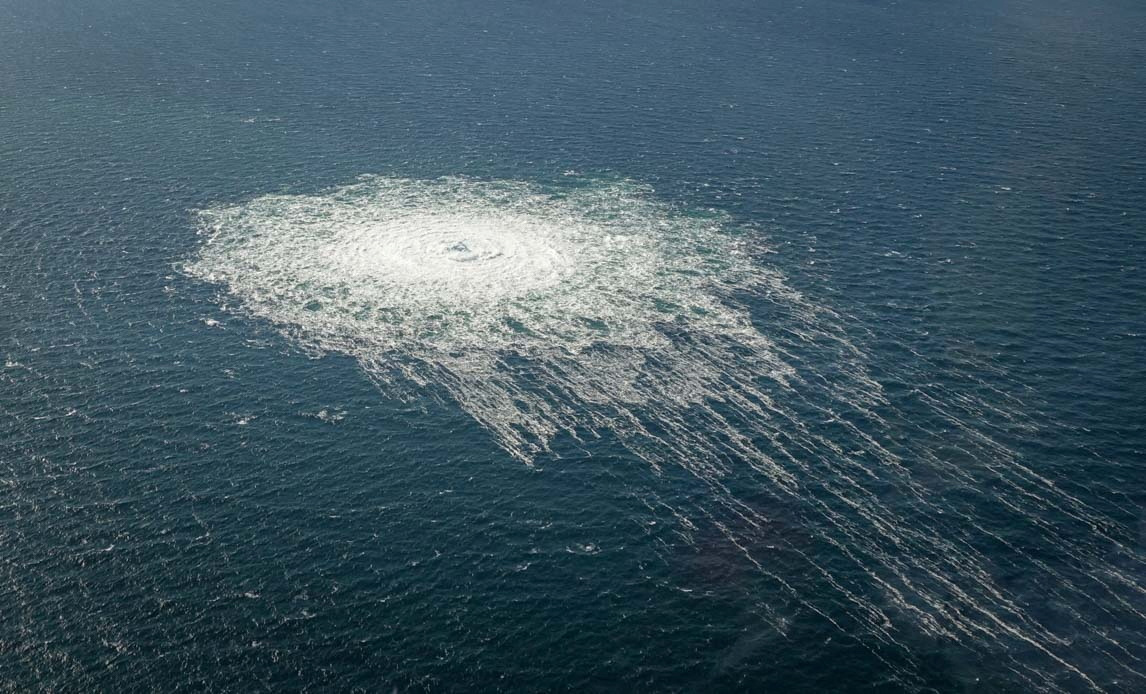
The Danish Defence Command has released video of what it said are gas leaks from Nord Stream in the Baltic Sea.
The video released by the authority shows bubbles and an area of disturbed sea.
It has also established prohibition zones around the Danish island of Bornholm, it said in a news release.
“Following the three gas leaks on the Nord Stream gas pipelines in the Baltic Sea, prohibition zones have been established around the leaks for the sake of the safety of ship and air traffic. Nord Stream 1 has two leaks northeast of Bornholm, Nord Stream 2 has one leak south of Dueodde. The leaks were discovered by the Danish Defence F-16 interceptor response unit,” the authority said.
Denmark is sending two ships to an area in the Baltic Sea to make sure that no one enters the maritime zone affected by the leaks.
“The defense is supporting in connection with the authorities’ efforts regarding the leaks on the Nord Stream gas pipelines in the Baltic Sea. The frigate Absalon and the pollution control vessel ship Gunnar Thorson are on their way to carry out water monitoring at the exclusion zones, and the Danish Defence are also supporting with a helicopter capacity. In addition, the patrol ship Rota was in the area last night,” according to the authority.
Source: https://www.cnn.com/europe/live-news/russia-ukraine-war-news-09-27-22/index.html















